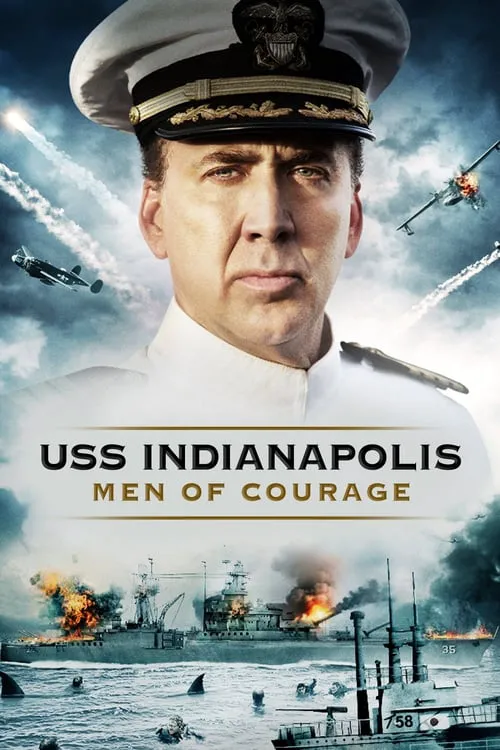USS Indianapolis: Men of Courage

Plot
Against the backdrop of World War II, the US Navy's USS Indianapolis, an Indianapolis-class cruiser, played a significant role in the ultimate Allied victory. Commissioned in 1932, the ship was known for its exceptional speed and firepower. As tensions escalated in the Pacific, the USS Indianapolis set sail under the command of Captain Charles B. McVay III from the Philippines to Tinian Island, a US military base in the Northern Mariana Islands, in June 1945. The mission was critical: the war was drawing to a close, and the Allies needed to deliver the atomic bombs, the "Little Boy" and the "Fat Man," which would eventually be dropped on Hiroshima and Nagasaki, bringing an end to the devastating war. The crew of the USS Indianapolis, consisting of around 1,196 sailors and officers, had been at sea for several days, making good time as they traversed the Philippine Sea. At around 12:15 AM on July 30, 1945, while navigating through shark-infested waters, the ship was struck by two Japanese torpedoes. Released in a starboard-to-port blast, the torpedoes caused massive damage, resulting in the sinking of the USS Indianapolis in approximately 12 minutes. The explosion was so powerful that it was seen 30 miles away. The crew was caught off guard, leaving them little time to respond, and many were either killed instantly or trapped below deck. Approximately 900 crew members managed to escape the sinking ship, but they were left in the middle of the ocean with little hope of rescue. The survivors found themselves in a desperate situation – they had to contend with extreme dehydration, hunger, and the merciless attacks of predators such as sharks and saltwater crocodiles, which saw them as a source of food. The crew's plight was exacerbated by the harsh tropical climate, with scorching sun and temperatures reaching 120 degrees Fahrenheit. Those who were unable to find shelter in the debris of their sunken ship were exposed to these unforgiving conditions. The survivors had to fend for themselves in a disorienting environment, with no clear direction or assistance. Many of them turned to the US Navy's emergency rations, which included canned goods and biscuits, but these proved to be of very little help in the face of their dire situation. The scarcity of clean drinking water and lack of adequate food supplies led to severe dehydration and malnutrition, resulting in the deaths of many crew members. Those who managed to stay afloat clung to debris, including the remains of the ship's lifeboats, trying to avoid the incessant attacks of the predators lurking beneath the surface. Meanwhile, the crew had received no rescue aid due to a critical communication breakdown. A crucial signal sent by the ship's crew after they were attacked had not been relayed back to naval commands, a fact that wouldn't come to light until days later. It would take a British naval ship, the HMCS St. Croix (a Canadian corvette), five days to reach the scene of the tragedy – a voyage of several hundred miles that felt like an eternity for those who waited desperately. In a harrowing episode that would go down in history as one of the most tragic maritime disasters, hundreds of the USS Indianapolis crew perished. Of the 900 who managed to escape the ship, only around 317 were rescued by the HMCS St. Croix on August 2, 1945. The tragic events that unfolded over the next few days would go on to claim the lives of nearly 60% of the crew, making the incident one of the most devastating naval disasters in American history. As those who were rescued began to recount their harrowing ordeal, their accounts of the extreme suffering and brutality they had endured were met with shock and sadness back in the United States. The tragic fate of the USS Indianapolis crew sparked widespread outrage and public debate about the chain of errors that led to the sinking and the resulting loss of life. In the aftermath of the tragedy, the US Navy convened a court of inquiry to determine the causes of the incident. Although the official inquiries cleared Captain McVay of any direct culpability, a subsequent review of the evidence led to a reversal of this decision. The US Navy formally cleared Captain McVay of blame in 2000, a belated recognition of his heroic efforts to save his crew. Today, a film has been dedicated to the brave men who lost their lives in the tragic sinking of the USS Indianapolis, bringing awareness of the heroic endeavors and sacrifices of the crew, whose story continues to stir emotions and inspire respect for the unsung heroes of the war.
Reviews
Recommendations




